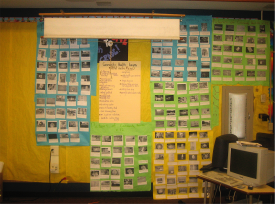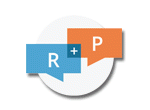How to launch STEM investigations that build on student and community interests and expertise

- Teachers can help their students care about what they are learning, understand why it is relevant to their lives, and how to apply it to improve their lives and the lives of others.
- District Staff & PD Providers should provide teachers with examples of interest-driven and locally-relevant science and engineering investigations.
- School Leaders should support teachers in adapting curriculum to build on student and community interests and expertise and in bringing community experts into the classroom.
What Is The Issue?
Students are frequently asked to engage in prescribed science investigations that have already been fully designed in the curriculum. It can sometimes be very challenging for students to find those investigations personally meaningful. Ideally, the phenomena they study should be personally compelling. A formative assessment strategy called self-documentation can focus students’ science and engineering investigations on their personal and community interests in ways that make them more personally relevant.
Authors:
BY PHILIP BELL, DEB MORRISON & ANGELA DEBARGER - NOVEMBER 2015
Reflection Questions
- Which curriculum units do you teach that could be connected to students’ lives outside of school?
- How will you create a safe classroom culture where students are able to openly share aspects of their lives? How can you help them share only what they and their families are comfortable sharing?
- You should model how STEM relates to your own cultural life. Do any self-doc task yourself before asking students to do it. What would you focus on?
Things to Consider
- Eliciting and attending to student’s prior knowledge is a crucial formative assessment approach to guide instruction which roots teacher decisions in resources students bring into the classroom.
- Building on prior interest and identity in instruction supports deeper engagement and learning. Instruction designed to leverage the personal interests and expertise of learners increases engagement and learning for youth who otherwise might not engage as deeply. Curriculum units can often be redesigned to incorporate student and community interests and expertise.
- Cultural approaches to formative assessment assume that students bring important knowledge, interests, and experiences from their daily lives to the classroom that teachers should elicit and use to inform instruction. An instructional technique called self-documentation is one way to do this.
“There are literally millions of potentially interesting things in the world to see, to do, to learn about. But they don’t become actually interesting until we devote attention to them.”
—Mihaly Csikszentmihalyi, author of Flow

Self-Doc Example on Microbiology & Health
(Picture shows self-doc pics being clustered for a class)
Attending to Equity
- Self-documentation involves the following instructional steps: Focusing instruction on youth and community interest is a powerful pedagogical strategy for making learning experiences inclusive and meaningful. It also allows teachers to make the most of sources of knowledge from students’ own cultures and communities. Local experts can be tapped to bring this knowledge into the classroom, offering an opportunity for students to see people from their own community valued in the classroom.
- Promote inclusive and democratic approaches to make decisions about investigations to pursue. Students with more social capital, rather than the best idea, can sometimes sway the decision.
Recommended Actions You Can Take
- Read about this classroom description of self-documentation (on page 84). Self-doc is a formative assessment strategy to surface aspects of the cultural lives of learners to guide instruction. Self-documentation can identify the dynamic, everyday practices, and concerns in the students’ communities that can be meaningfully related to classroom science and engineering investigations.
- Self-documentation involves the following instructional steps: (1) ask students to “photo document” aspects of their everyday lives (e.g., about a phenomena or topic), (2) cluster their photos into similar activities, (3) identify which activities are possible areas of investigation for the unit, (4) support students in engaging in investigations related to their focus, and (5) arrange for students to present their results to members of the community / STEM experts.
ALSO SEE STEM TEACHING TOOLS
STEM Teaching Tools content copyright 2014-22 UW Institute for Science + Math Education. All rights reserved.
This site is primarily funded by the National Science Foundation (NSF) through Award #1920249 (previously through Awards #1238253 and #1854059). Opinions expressed are not those of any funding agency.
Work is licensed under a Creative Commons Attribution-ShareAlike 4.0 Unported License. Others may adapt with attribution. Funded by the National Science Foundation (NSF). Opinions expressed are not those of any funding agency.


 Email Feedback
Email Feedback


